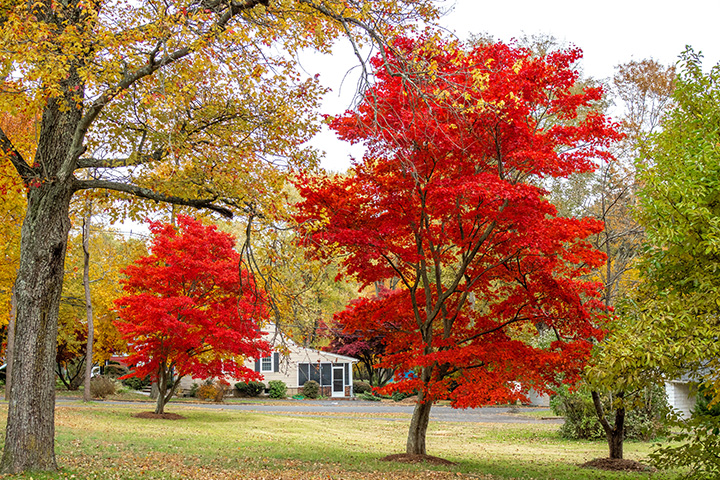
As the crisp breeze of autumn sweeps through, nature orchestrates a magnificent symphony of colors, leaving us in awe. Join us as we delve into fascinating fun facts about trees and autumn, explore the prospects of this year’s leaf-viewing season, and uncover what truly determines the vibrancy of fall colors. Plus, get ready to meet some spectacular trees and shrubs that steal the show during the fall season.
Why Do Some Trees’ Leaves Change Colors and Drop Leaves, While Others Do Not?
In the world of trees, there’s a contrast between evergreen and deciduous varieties, particularly when it comes to the spectacle of autumn. Deciduous trees undergo a dramatic color transformation as they prepare for winter. Yet, their evergreen counterparts, like pines and spruces, maintain their lush green foliage year-round. Evergreens have a waxy coating on their unique, needle-shaped leaves that allows them to conserve water and remain on the plant throughout the winter. This adaptation allows them to continue photosynthesis even in winter, keeping their signature green hue unchanged throughout the year.
Fun Facts About Trees and Autumn
Autumn isn’t just about breathtaking landscapes; it’s also about the little-known marvels of trees.
Did you know:
- That trees can sense the decreasing daylight hours, triggering the process of leaf color change?
- That the vibrant red hues are actually due to anthocyanin pigments produced as a protective measure against sunlight?
- That not all leaves fall at once? Trees have a leaf-dropping strategy, shedding leaves gradually over several weeks to maximize their energy conservation.
- That trees can sense impending frost? They begin preparing for winter by reducing moisture levels in their leaves, which helps prevent freezing and damage.
- That trees can affect your mood? Spending time in wooded areas during autumn can reduce stress, improve mood, and increase feelings of well-being.
Will This Year Be Good for Leaf Viewing?
The anticipation for the autumn leaf-viewing season is as exciting as ever, but will this year be a spectacle? While it’s challenging to predict with absolute certainty, factors such as temperature, rainfall, and sunlight play significant roles. Keep an eye on local weather updates to make sure you don’t miss the leaf viewing window.
What Determines If Fall Color Will Be Vibrant
The intensity of fall colors is a result of various factors, including the health of the tree, species-specific characteristics, and environmental conditions. Healthy trees tend to display more vibrant colors. Optimal weather conditions, with warm, sunny days and cool nights, can enhance the brilliance of autumn foliage. Curious about your trees? Contact us for a tree health assessment.
The Stars of Fall: Trees and Shrubs
Now, let’s meet some of the dazzling performers of the fall foliage show:
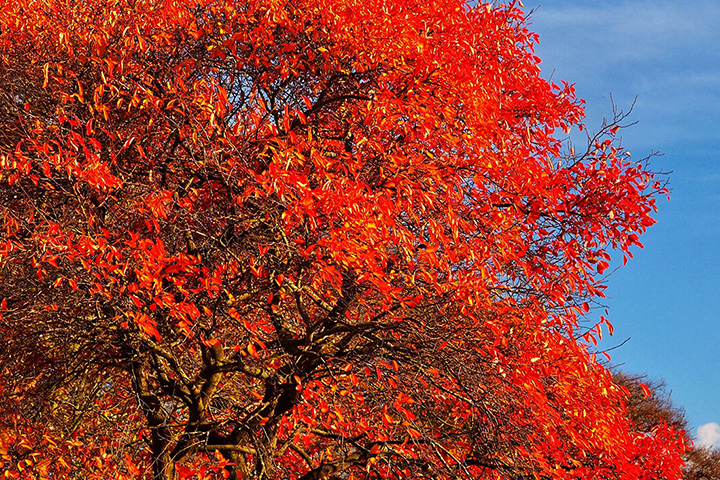
Black Tupelo: With its fiery red leaves in autumn, the Black Tupelo, also known as the Black Gum tree, is a true showstopper. Its glossy foliage transitions from green to brilliant red, making it a favorite among tree enthusiasts.
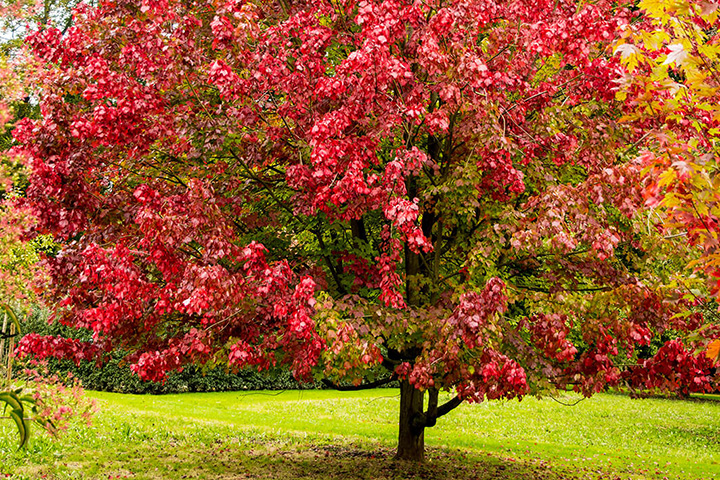
Red Maple: As its name suggests, the Red Maple boasts stunning red foliage in the fall. This versatile tree adapts well to different soil conditions, making it a common sight in many landscapes.
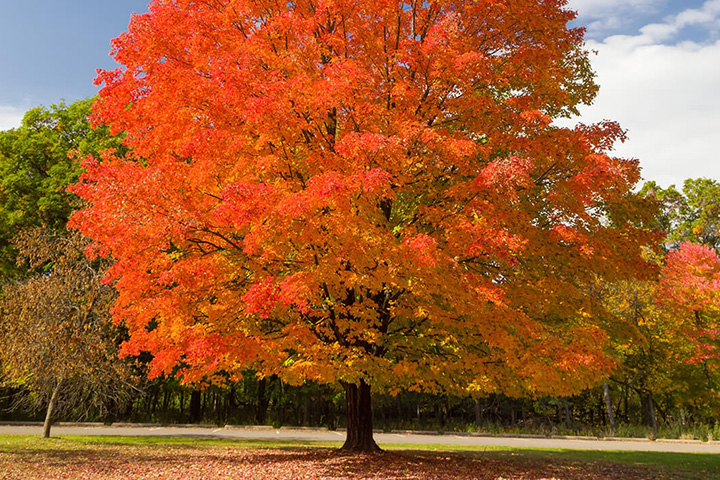
Sugar Maple: The Sugar Maple is famous for its vibrant orange and red hues in the autumn. It’s the primary source of maple syrup and holds a special place in the hearts of many.
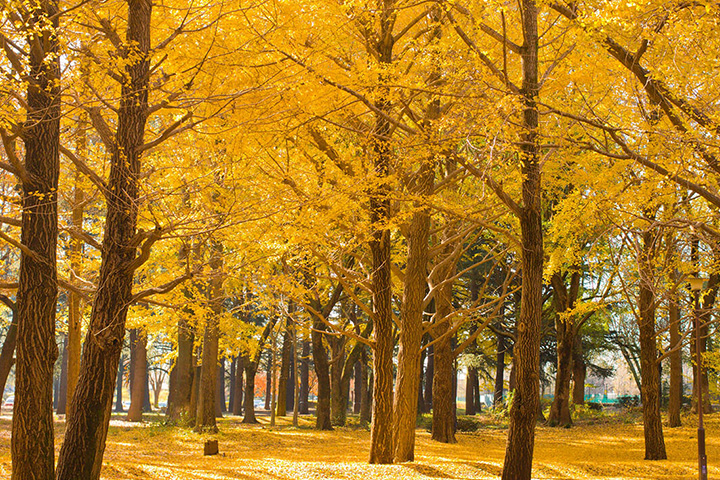
Ginko: Known for its unique fan-shaped leaves that turn a brilliant gold in autumn, the Ginko is a living fossil, dating back to prehistoric times.
And now, let’s not forget the spectacular shrubs:
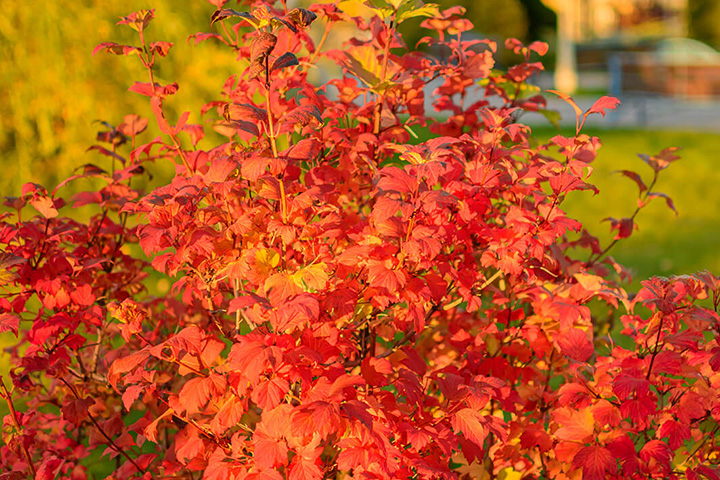
Ninebark: With its peeling bark and deep burgundy foliage in the fall, Ninebark adds a touch of drama to your landscape.
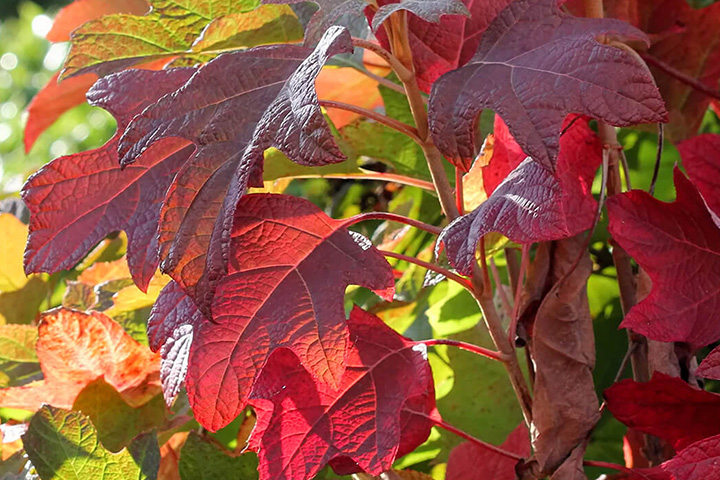
Oakleaf Hydrangea: Known for its large, oak-like leaves that turn shades of deep red, maroon, and purple in the autumn, this hydrangea variety is a true stunner.
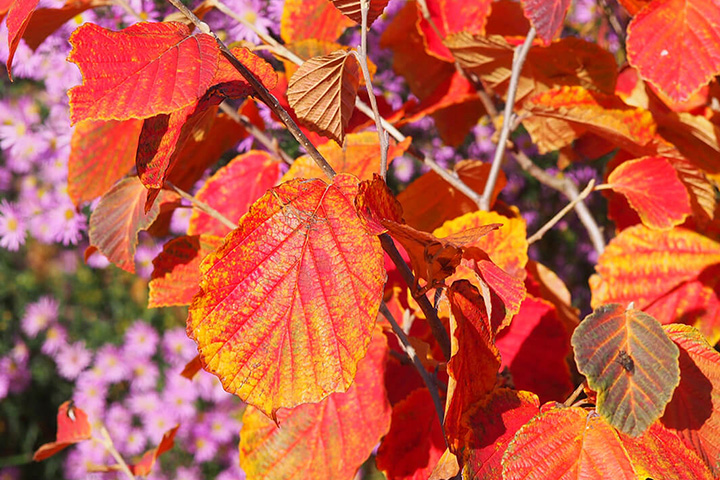
Witch Hazel: Witch Hazel’s spidery, fragrant blooms in late winter are followed by brilliant yellow foliage in the fall, making it a unique addition to any garden.
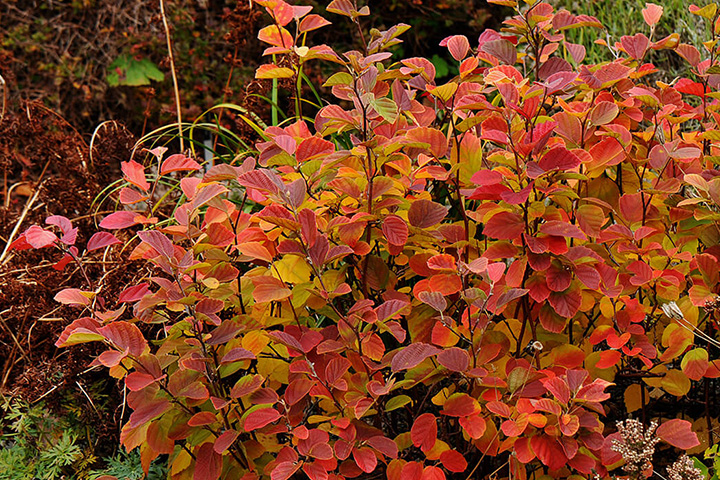
Dwarf Fothergilla: This compact shrub dazzles with its vibrant mix of orange, red, and purple hues in the fall, making it a focal point in your landscape.
Take Action for a Vibrant Autumn and Winter Preparedness
As you revel in the beauty of autumn, remember that we are here to assist you with any questions about the health of your trees and preparations for winter. Don’t hesitate to reach out to our expert team for guidance and assistance. Let’s ensure your trees thrive and your home remains a sanctuary throughout the seasons. Contact us today for all your tree care needs and expertise!
The Magic of Autumn: Why Do Trees Change Color and More! in Eastern Massachusetts
Also Serving Rhode Island
Boston | Worcester | Cambridge | Brockton | Quincy | New Bedford | Fall River | Newton | Foxboro | Framingham | Plymouth | Attleboro | Taunton | Hingham | Needham | North Attleboro | Norton | Easton | Franklin | Walpole | Dover | Westwood
Providence | Warwick | Cranston | Pawtucket | Newport | Woonsocket | Cumberland | Coventry | Newport | Johnston | North Kingstown | Bristol | Portsmouth
Home » The Magic of Autumn: Why Do Trees Change Color and More!



